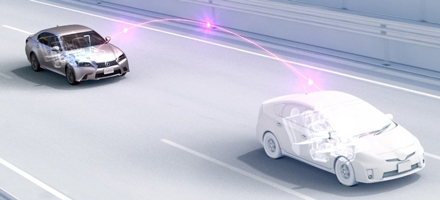|
 As reported in the June issue of IEEE
Vehicular Technology Magazine, the National Highway Traffic Safety
Administration (NHTSA) Department of Transportation has issued a proposed rule,
“The Federal Motor Vehicle Safety Standard (FMVSS); Vehicle-to-Vehicle (V2V)
Communications,” that would require auto-makers to include V2V technologies in
all new light-duty vehicles. As reported in the June issue of IEEE
Vehicular Technology Magazine, the National Highway Traffic Safety
Administration (NHTSA) Department of Transportation has issued a proposed rule,
“The Federal Motor Vehicle Safety Standard (FMVSS); Vehicle-to-Vehicle (V2V)
Communications,” that would require auto-makers to include V2V technologies in
all new light-duty vehicles.
The proposed rule was open for public comments
until 12 April and received several replies, which were most notably from four
different stakeholders, reflecting the still-ongoing heated debate about
sharing the intelligent transport systems (ITS) frequency band in the United
States.
The Safety Spectrum Coalition members [the
American Trucking Associations, American Automobile Association (AAA), the
Association of Global Automakers, the Intelligent Transportation Society of
America, and the National Safety Council] strongly support the proposed rule
establishing an FMVSS, requiring V2V capability through dedicated short-range
communications (DSRC) technology in cars and light trucks.
The Safety Spectrum Coalition, which
represents a group of industries—highway users, transportation technology,
consumer, and safety advocates—seeks to ensure that the 5.9-GHz safety spectrum
band remains available for the full deployment of DSRC technology.
The Safety Spectrum Coalition states that
it believes the proposed rule provides the regulatory framework and certainty
necessary to drive not only substantial and rapid light-duty fleet deployment
of V2V technology, but also to spur innovation, competition, and deployment in
the aftermarket and infrastructure industries. However, it also states that
DSRC technology will create a new wireless transportation application ecosystem
through all seven channels in the 5.9-GHz band.
The Safety Spectrum Coalition further
states that it strongly favors using channel 172 to support V2V basic safety
message transmissions and, therefore, sent a letter to the U.S. Federal
Communication Commission (FCC) to promote the release of the notice of proposed
rulemaking on connected vehicle technology and to ask the FCC to protect the
5.9-GHz safety spectrum and not delay the deployment of V2V technology.
The
Safety Spectrum Coalition states that it supports efforts under way to test
spectrum sharing to determine if unlicensed devices such as Wi-Fi can safely
share the 5.9-GHz band with DSRC operations.
However, the coalition states that it
firmly believes that any potential sharing plan should work around DSRC
operations in the band and not slow DSRC deployment. It concludes that any
sharing arrangements that would require rechanneling the band would hold up the
implementation of DSRC and the establishment of safety protocols, effectively
relegating vehicle safety to a secondary concern.
The coalition therefore urged NHTSA to
remain engaged with the FCC at what they call a critical juncture to ensure
that the safety benefits of DSRC can be realized.
ITS America commented on the proposed rule that
it believes an FMVSS is needed for V2V communications and that the proposed
standard should be performance based and flexible enough to incorporate future
technologies, including everything from standards for communications to
security and privacy for V2V applications.
ITS America believes that DSRC-based
standards and technology are currently the most technically mature and widely
accepted “cooperative” short-range approach for crash avoidance and vehicle
automation.
ITS America thus urges NHTSA to move carefully to ensure that any
standard is flexible enough to allow other wireless technologies to be
incorporated under the federal standard as long as they can demonstrate a
minimal combined performance for interoperability, security, and privacy.
Finally,
ITS America agrees with NHTSA that devices participating in the V2V information
environment need to exchange safety information but urges that choice of
channels should be left to industry within the constraints of the current FCC
technical and service rules.
Full article: IEEE Vehicular Technology
Magazine, Volume 12, Number 3, September 2017 |